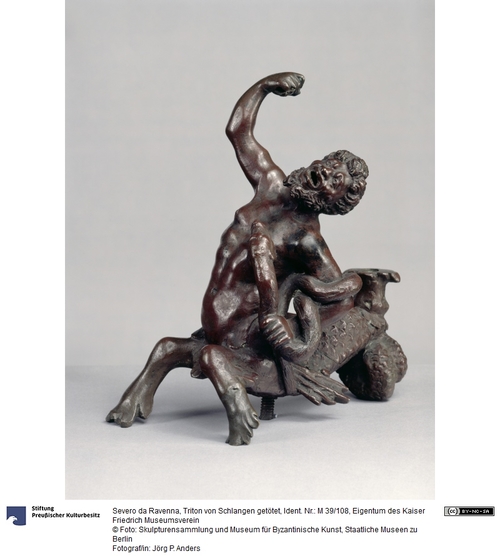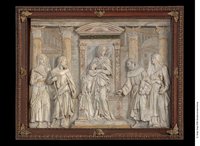Tritonen sind Mischwesen, die nach antiker Vorstellung im Meer leben. Die Darstellung ist durch die berühmte antike Figurengruppe des "Laokoon" angeregt, die 1506 in Rom entdeckt wurde und zeigt, wie zwei Schlangen Laokoon und seine Söhne töteten. Am Schwanz der Tritonen war eine Lampe, vor dem Leib vielleicht eine Muschel als Tintenfaß befestigt. Ein vollständiges Exemplar hat sich im Louvre in Paris erhalten.
Entstehungsort stilistisch: Padua oder Ravenna
Eigentum des Kaiser Friedrich Museumsverein
en

